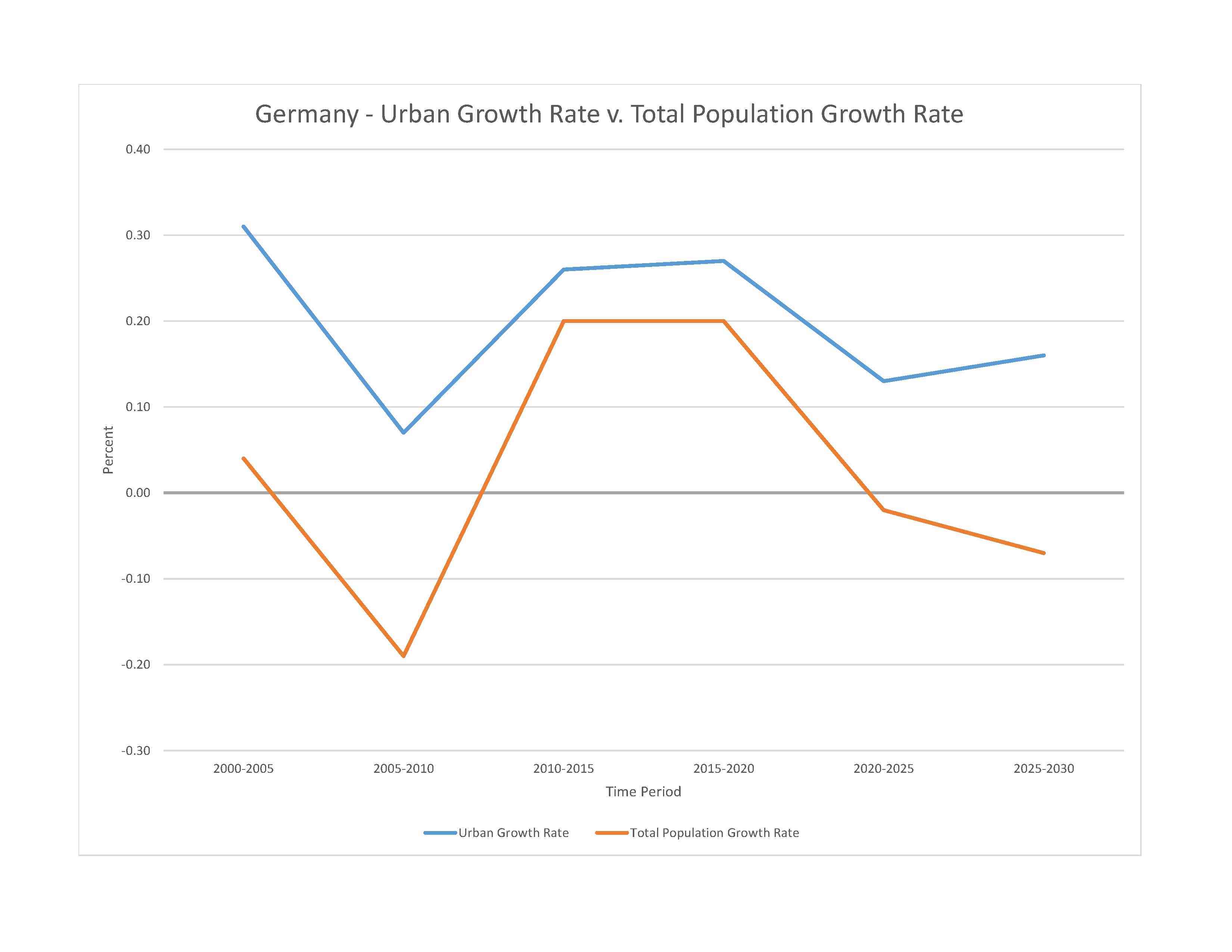
84,220,184 (2023 est.)
noun: German(s)
adjective: German
German 85.4%, Turkish 1.8%, Ukrainian 1.4%, Syrian 1.1%, Romanian 1%, Poland 1%, other/stateless/unspecified 8.3% (2022 est.)
note: data represent population by nationality
German (official); note - Danish, Frisian, Sorbian, and Romani are official minority languages; Low German, Danish, North Frisian, Sater Frisian, Lower Sorbian, Upper Sorbian, and Romani are recognized as regional languages under the European Charter for Regional or Minority Languages
major-language sample(s):
Das World Factbook, die unverzichtbare Quelle für grundlegende Informationen. (German)
The World Factbook, the indispensable source for basic information.
German audio sample:
Roman Catholic 24.8%, Protestant 22.6%, Muslim 3.7%, other 5.1%, none 43.8% (2022 est.)
0-14 years: 13.75% (male 5,905,124/female 5,673,727)
15-64 years: 62.97% (male 26,934,889/female 26,097,401)
65 years and over: 23.28% (2023 est.) (male 8,784,872/female 10,824,171)
total dependency ratio: 56.4
youth dependency ratio: 21.7
elderly dependency ratio: 34.7
potential support ratio: 2.9 (2021 est.)
total: 46.7 years (2023 est.)
male: 45.4 years
female: 48.2 years
-0.12% (2023 est.)
9 births/1,000 population (2023 est.)
12 deaths/1,000 population (2023 est.)
1.8 migrant(s)/1,000 population (2023 est.)
second most populous country in Europe; a fairly even distribution throughout most of the country, with urban areas attracting larger and denser populations, particularly in the far western part of the industrial state of North Rhine-Westphalia
urban population: 77.8% of total population (2023)
rate of urbanization: 0.13% annual rate of change (2020-25 est.)

3.574 million BERLIN (capital), 1.788 million Hamburg, 1.576 million Munich, 1.144 million Cologne, 796,000 Frankfurt (2023)
at birth: 1.05 male(s)/female
0-14 years: 1.04 male(s)/female
15-64 years: 1.03 male(s)/female
65 years and over: 0.81 male(s)/female
total population: 0.98 male(s)/female (2023 est.)
29.9 years (2020 est.)
4 deaths/100,000 live births (2020 est.)
total: 3.1 deaths/1,000 live births (2023 est.)
male: 3.5 deaths/1,000 live births
female: 2.8 deaths/1,000 live births
total population: 81.7 years (2023 est.)
male: 79.4 years
female: 84.2 years
1.58 children born/woman (2023 est.)
0.77 (2023 est.)
67% (2018)
note: percent of women aged 18-49
improved: urban: 100% of population
rural: 100% of population
total: 100% of population
unimproved: urban: 0% of population
rural: 0% of population
total: 0% of population (2020 est.)
12.8% of GDP (2020)
4.44 physicians/1,000 population (2020)
8 beds/1,000 population (2017)
improved: urban: 100% of population
rural: 100% of population
total: 100% of population
unimproved: urban: 0% of population
rural: 0% of population
total: 0% of population (2020 est.)
22.3% (2016)
total: 10.56 liters of pure alcohol (2019 est.)
beer: 5.57 liters of pure alcohol (2019 est.)
wine: 3.02 liters of pure alcohol (2019 est.)
spirits: 1.97 liters of pure alcohol (2019 est.)
other alcohols: 0 liters of pure alcohol (2019 est.)
total: 22% (2020 est.)
male: 24.1% (2020 est.)
female: 19.9% (2020 est.)
0.5% (2014/17)
54.4% (2023 est.)
4.7% of GDP (2020 est.)
total population: NA
male: NA
female: NA
total: 17 years
male: 17 years
female: 17 years (2020)
NOTE: The information regarding Germany on this page is re-published from the 2024 World Fact Book of the United States Central Intelligence Agency and other sources. No claims are made regarding the accuracy of Germany 2024 information contained here. All suggestions for corrections of any errors about Germany 2024 should be addressed to the CIA or the source cited on each page.
This page was last modified 04 May 24, Copyright © 2024 ITA all rights reserved.